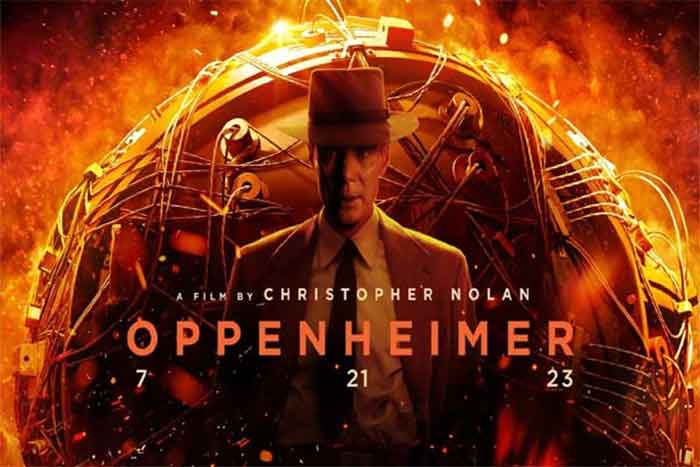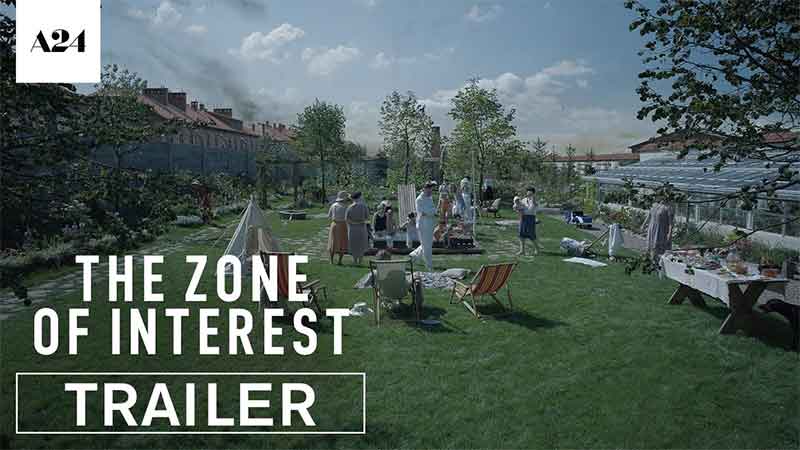
Shamefully much of the writing on the film Oppenheimer fails to grasp the film’s blatant failure to show the suffering of the people in Japan or of those living on the site of the tests in the U.S.
Clearly, the Japanese are deeply hurt and the film has not been released there yet ..The Los Angeles Times makes it clear. On Aug. 6, 1945, the United States dropped an atomic bomb on Hiroshima, Japan, instantly killing thousands of civilians and devastating thousands more. The destruction was immense. Hiroshima city was leveled for miles and the survivors suffered radiation sickness, life-changing injuries and unshakable trauma. Three days later, the U.S. dropped a second bomb on Nagasaki. It is now estimated that more than 200,000 people died in all.
None of this is portrayed in “Oppenheimer,” Christopher Nolan’s blockbuster about the creation of the bomb.
The film, told through the lens of American theoretical physicist J. Robert Oppenheimer (Cillian Murphy), has earned rave reviews and box-office success. But for some observers, the movie, based on Kai Bird and Martin J. Sherwin’s 2005 biography “American Prometheus,” centers Oppenheimer’s perspective without acknowledging the human toll of his technology.
It never shows the bombing of Hiroshima or Nagasaki, for instance, or the aftermath in either city. The number of casualties is mentioned once in passing. Additionally, other than one throwaway line, there is no reference to the effect atomic testing had on Native Americans in New Mexico.
In India Praful Bidwai would have been the most appropriate choice to write on the film Oppenheimer since he knew the issues involved, he knew physics as an ex IITan, he was a very active campaigner against nuclear energy and was brought up on political activism. Unfortunately, he passed away eight years ago during a visit to Netherlands at age 66.
So another reputed ex Times of India colleague of mine Sanjaya Baru wrote on the film on the edit page of the paper on July 25. He is one of our best writers on economics and to some extent on politics. He is too generous to the U.S. saying `For all its faults from time to time the US has had a proud history of defending freedom of speech and thought and protecting the institutions of the state from their takeover by authoritarian and sectarian forces.’ This is repeated in bold letters in the middle of the article.
Interesting but we need a more nuanced analysis considering that so much more material is now available on Oppenheimer and the issues involved. Oppenheimer was far better acquainted with the Gita than is thought, though his stray quote from the Gita has always been known and is now so much in the news.
He was not all that innocent, he knew what he was doing and of its consequences. He had been studying the Gita for a long time as work done by James Hijjiya, professor of history at the university of Massachusetts shows.
Having learned vicariously the lesson of Arjuna, he did his job without the prince’s initial hesitation and despondency. Perhaps history would have been different if Oppenheimer had opposed the bombing from the start.
Oppenheimer had also been very active in left wing politics and perhaps he fell a victim to the Stalinist hold over the American communist movement. As one analyst has pointed out -For a few years, American “Communism” taught its followers that it was possible to do both: that peace, freedom and human development could be served by the accumulation of military might in the hands of our rulers. We live in the shadow of that lie to this day.
Noam Chomsky has often called the U.S. a terrorist state and so many other experts have written in detail and in strong words about the country’s continuous rule by violence for over 300 years. Our intellectuals are too soft on state. This is not to deny the democratic tradition of the U.S. but it is based on exploitation and imperialism and even genocide. It is all there so clear. This is not a grey area. .
. All these years many of our intellectuals were with the American establishment during the cold war, insensitive to the witch hunt of suspected Communists.
Now suddenly we dramatize Oppenheimer , fall into the trap of the makers, to shift attention from America’s more serious crimes.
The victims of the test in the U.S. said, ash fell from the sky, contaminated with plutonium. A 2010 study by the Centers for Disease Control and Prevention found that after the test, radiation levels near some homes in the area reached “almost 10,000 times what is currently allowed in public areas.”
That fallout has had devastating health consequences. A victim said — I know of no one who lost their life during the test, the organization I co-founded has documented many instances of families in New Mexico with four and five generations of cancers since the bomb was detonated. My own family is typical: I am the fourth generation in my family to have had cancer since 1945. My 23-year-old niece has just been diagnosed with thyroid cancer. She is a college student studying art. Now her life, too, has been upended.
Despite this, New Mexicans who may have been exposed to radioactive fallout from Trinity have never been eligible for compensation under the Radiation Exposure Compensation Act, a 1990 federal law that has provided billions to people exposed during subsequent tests on U.S. soil or during uranium mining.
“Oppenheimer” leaves out other stories, too. The Manhattan Project and the nuclear weapons industry used the promise of a better life to entice thousands of people in the Southwest into the uranium mines that supplied the Manhattan Project. The miners went to work each day without adequate safety gear, while supervisors wore it from head to toe. Miners seldom left the mines during their shifts, even to eat lunch. They drank the contaminated water inside the mines when they were allowed to take breaks.
Many of the farmers of the Pajarito Plateau in northern New Mexico, after being displaced through eminent domain so that the Los Alamos laboratory could be built, were bused up the mountain to the lab site to do the dirtiest jobs, including building the roads, the bridges, the facilities. When those were complete, many were given new jobs at the lab, including janitorial work. Their wives and other Hispanic and Native American women were enlisted as domestic workers who cleaned the houses, cooked the meals, filled the baby bottles, and changed the diapers in the remote compound while the bomb was being developed.
After the test, Oppenheimer was transformed by relief. “I’ll never forget the way he stepped out of the car,” fellow Manhattan Project scientist Isidor Isaac Rabi later said. “His walk was like High Noon … this kind of strut. He had done it.”
The historian Gabriel Jackson has aptly argued that “the use of the atom bomb showed that a psychologically very normal and democratically elected chief executive could use the weapon just as the Nazi dictator would have used it. In this way, the United States—for anyone concerned with moral distinctions in the different types of government—blurred the difference between fascism and democracy.”
Critics take down the information about these choices like publicists and report them faithfully to a duly impressed public — such as Nolan’s surprising decision not to show the Japanese victims of the atomic bombings. Instead, we see Oppenheimer merely imagining the effects of the bomb on members of his rapturous audience.
1942, the U.S. Army gave 32 Hispano families on the Pajarito Plateau 48 hours to leave their homes and land, in some cases at gunpoint, to build the lab that would create the world’s first atomic bombs, according to relatives of those removed ..
Starting in 1942, the U.S. government began quietly acquiring more than 60,000 acres in Eastern Tennessee for the Manhattan Project—the secret World War II program that developed the atomic bomb. The government needed land to build massive facilities to refine and develop nuclear materials for these new weapons, without attracting the attention of enemy spies. The result was a secret town named Oak Ridge that housed tens of thousands of workers and their families. The entire town and facility were fenced in, with armed guards posted at all entries. Workers were sworn to secrecy and only informed of the specific tasks they needed to perform. Most were unaware of the exact nature of their final product until the nuclear bombs were dropped on Japan in 1945.
Vidydhar Date is a senior journalist and author of a book on public transpor
















































